In 2020, the news of Grant Imahara’s passing shook science enthusiasts around the world. A renowned roboticist, electrical engineer and a TV host, Grant gained popularity through the science TV show “MythBusters”, designing and building numerous robots which were meant to test out popular beliefs, while working on a number of passion projects on the side. Grant’s love for engineering shone through every aspect of his work. ‘When I was a kid, I never wanted to be James Bond. I wanted to be Q, because he was the guy who made all the gadgets’, he famously said in one his interviews.
Who was Grant Imahara?
Grant Imahara was born on 23 October 1970, in Los Angeles, California into a Japanese-American family. He was an excellent student and upon matriculating high school, he was granted a scholarship at the University of Southern Carolina, from which he graduated in 1993, with a Bachelor’s degree in electrical engineering. He was also interested in working in the entertainment industry at the time, and had at one point considered switching majors to become a screenwriter. Finding out that the Cinematic Arts School at his university had restriction which prevented him changing his major, Grant briefly left college altogether, and it was only after his engineering professor took him under his wing that Imahara changed his decision.
Soon after graduating, Grant landed a job as an engineer for Lucasfilm’s THX division, before moving to their special effects division. During his time there, he worked on numerous high-budget blockbusters produced by the studio, including movies from “Star Wars”, “Jurassic Park” and “The Matrix” franchises. He was primarily involved as a model maker, and was credited for his work on updating the original R2-D2 robot in the “Star Wars” prequel trilogy. Grant had also built a robot which later became a champion on Comedy Central’s robot fighting show “Battle Bots” in 2002. In the following year, he published a book about his experience, entitled “Kickin’ Bot: An Illustrated Guide to Building Combat Robots”.
Happy #MayTheFourth from me and #BabyYoda! I was lucky enough to work at @Lucasfilm_Ltd and @ILMVFX on #StarWars projects from 1993-2005. I look back on those years fondly and look forward to their plans for the future of the franchise. #MayThe4thBeWithYou #TheMandalorian pic.twitter.com/AphjVWjZy8
— Grant Imahara (@grantimahara) May 5, 2020
Grant joined the cast of Discovery Channel popular science show “MythBusters” in 2005, on an invitation from his former Lucasfilm colleague, Linda Wolkovitch, who was also an associate producer on the series. Filmed in San Francisco, California, the show focused on testing the validity of various rumors, myths and conventional wisdoms through the use of scientific methods. Over the course of 14 years, it became a cultural phenomenon, and was broadcast in over 50 countries.
Grant was initially cast to replace the former “MythBusters” welder, Scottie Chapman, joining Kari Bryon and Tory Belleci on the ‘Build Team’. The three of them worked independently from the main hosts, Jamie Hyneman and Adam Savage, and had a separate segment on the show. In an interview from 2008, Grant talked about what a typical filming day looked like for him: ‘We could be jumping out of planes, learning to swing on a trapeze, swimming with sharks, and the list goes on and on. We usually find out what we’re doing for the week on Monday morning.’
After nearly nine years, in 2014 the trio left the show to develop their own series – “White Rabbit Project”, which was released on Netflix in spring 2016. Similarly to “MythBusters”, “White Rabbit Project” explored unusual scientific concepts prevalent in pop culture, history and science. The first season of the show was warmly received by the audience and critics alike, but sadly, it was never renewed despite the praise.
In 2018, Grant returned to “BattleBots”, this time as one of the judges. In the same year, it was announced that he had been working with Walt Disney Imagineering, and was included as an author on their research paper, “Stickman: Towards a Human Scale Acrobatic Robot”. The robot whose design was detailed in the paper used a gravity-driven pendulum launch to produce stunts, while utilizing a laser range-finder to estimate its position mid-flight. Soon thereafter, a limited number of Stickman prototypes have been built for usage in Disney World theme parks across the globe.
In 2020, for one of his last projects Grant built a fully animatronic model of Baby Yoda from the TV series “The Mandalorian”, with which he had planned to tour children’s hospitals.
Personal life
Four years prior to his untimely death, Grant became engaged to his long-term girlfriend, Jennifer Newman, proposed during her birthday party in front of nearly 300 guests – according to “TMZ”, her antique engagement ring embellished with diamonds cost over $20,000 dollars. Jennifer works as an actress and a costume designer, on movies such as “Batgirl: Spoiled” and the sci-fi short “The Death and return of Superman”. Grant and Jennifer never married.
Outside of work, Grant was a passionate tabletop gamer, and frequently made appearances on the Greek & Sundry YouTube channel. He also enjoyed playing video games, with some of his favorite titles being “Age of Empires II” and “Kerbal Space Program”.
Cause of death
Grant passed away at 49 years old, on 13 July 2020, after suffering a rupture of an undiagnosed intracranial aneurysm. According to a “TMZ” report, in the days leading to his death, Imahara had been experiencing painful headaches which were attributed to migraines. After his pain significantly worsened, he was rushed to a hospital where he was correctly diagnosed. He underwent an emergency surgery the same day, but sadly never fully recovered. After another operation Grant’s condition didn’t improve, and he was pronounced dead.
Grant’s sudden death came as a shock to his friends and longtime co-workers. ‘Grant was a truly brilliant engineer, artist and performer, but also just such a generous, easygoing, and gentle PERSON. Working with Grant was so much fun. I’ll miss my friend.’ wrote Adam Savage, Grant’s former “MythBusters” co-star in a touching Instagram post.
In the days following Grant’s passing, his fiancée Jennifer tweeted ‘I haven’t found the words. I don’t know if I’ll be able to. I lost a part of my heart and soul today. He was so generous and kind, so endlessly sweet and so loved by his incredible friends. I feel so lucky to have known him, to have loved & been loved by him. I love you, honey.’
Grant Imahara’s legacy
On 23 October 2020 – the day which would have been Grant’s 50th birthday, his family, friends and colleagues announced the establishment of Grant Imahara STEAM Foundation. The non-profit organization is set to honor the late engineer’s legacy by providing grants, scholarships and mentoring support to students pursuing an education in STEAM (science, technology, engineering, the arts, and mathematics) related fields.
‘There are many students, like my son Grant, who need the balance of the technical and the creative, and this is what STEAM is all about. I’m so proud of my son’s career, but I’m equally proud of the work he did mentoring students. He would be thrilled that we plan to continue this, plus much more, through The Grant Imahara STEAM Foundation.’, said Carolyn Imahara, Grant’s mother and foundation co-founder. To raise money for the foundation, more than 80 props which Grant had built during his time on “MythBusters” were sold at auction in August 2021.
Several months after Grant’s passing, the co-founder of “BattleBots”, Greg Munson, announced that the competition’s “Best Design Award” would be renamed to the “Grant Imahara Award for Best Design”.
https://www.facebook.com/grantimaharaofficial/photos/a.1853210011561131/2163661020516027/?type=3
Why did “MythBusters” end?
Grant Imahara left a big mark on “MythBusters” during his time on the show. The moment when he and the rest of the ‘Build Team’ left the series is often considered to be a breaking point of the long-running TV show, as its ratings quickly plummeted. The low viewership combined with the high cost of filming “MythBusters”, prompted the hosts Adam Savage and Jamie Hyneman to call quits on the series. According to one of their post-show interviews, they expected the show to be cancelled by the network in the following years, so they agreed to film a final season and finish it on their own terms. ‘The thing that really makes me happy, is most cable shows like ours just end. They get past their freshness date, you finish a season and then you hear you’ll never see another one. I truly thought that’s the way “MythBusters” would end. We’ve been filming the last season this year and we get to send it off, we get to pay homage to this thing that’s changed our lives.’, said Adam.
The final episode of the series aired in 2016. However, Discovery Channel was still on the lookout for more “MythBusters” content, so in the same year the network launched a spin-off series entitled “MythBusters: The Search” – a competition-style series which would determine the new hosts of the original show. The winners Brian Louden and Jon Lung went on to host the only season of the revival series in 2017.
In 2018, Adam Savage made his return to the franchise in another spin-off, “MythBusters Jr.”, in which we saw him mentoring a group of six aspiring young scientists. Much like the revival series, “MythBusters Jr.” unfortunately lasted for only one season.
As of right now, it seems highly unlikely that we would see Savage and Hyneman working together on any “MythBusters” related projects in the future. Although the two are known as one of the most iconic duos on TV, behind the scenes there seems to have been a lot of tension between them, which may have also contributed to their decision to quit working on “MythBusters”.
https://www.instagram.com/p/Cf-v_jOOznE/
More about “MythBusters”
“MythBusters”, one of Discovery’s most successful series, was initially developed by the Australian writer and producer Peter Rees in 2002, under the title “Tall Tales or True”. The network initially rejected the proposal since they’d just commissioned a similar show, however, a refined proposal convinced them to give “MythBusters” a shot, and film a three-episode pilot. The first name who was set to host the show was Jamie Hyneman, who had previously worked as a special-effects artist on shows such as “Robot Wars” and “BattleBots”. Although Jamie was excited about the opportunity, he didn’t want to be the sole host, so he brought in his colleague, Adam Savage.
The two were the sole presenters during the first season, working from Jamie’s special effects workshop dubbed M5 Industries, while his staff initially worked behind the scenes. As the show progressed, they became more prevalent in the episodes, and three of them – Scottie Chapman, Kary Bryon and Tory Belleci, went on to form the ‘Build Team’, working from their own workshop called M7 – Grant Imahara replaced Chapman during the third season. “MythBusters” had also had a team of two ‘interns’ dubbed ‘Myththerns’, consisting of Jess Nelson and Christine Chamberlain.
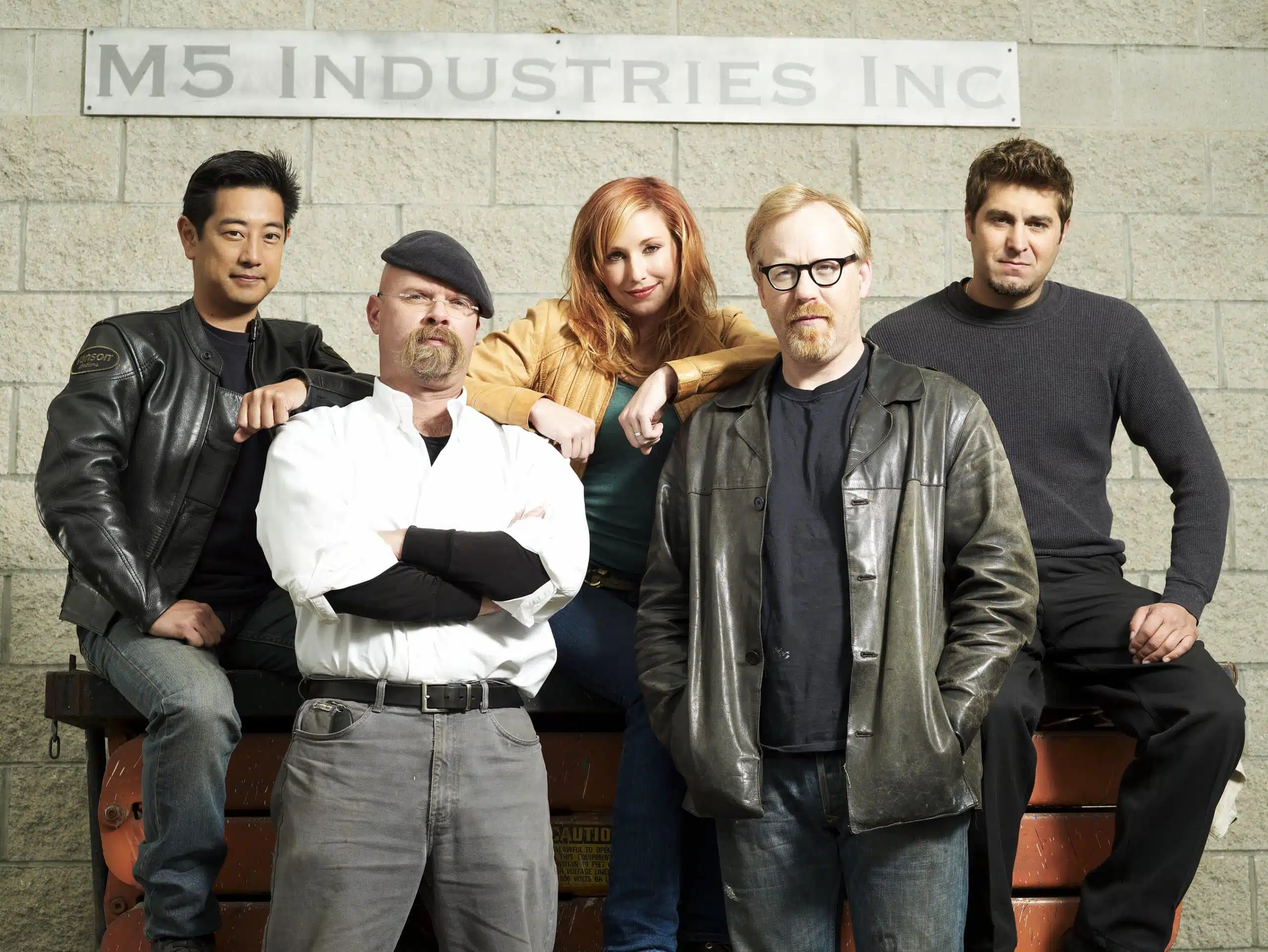
“MythBusters” typically test out misconceptions though a two-step process – ‘replicate the circumstances, then duplicate the results’. If this approach fails, they sometimes try to push the boundaries by expanding the circumstances of the experiments so that the results are sure to be replicated, exposing the ridiculousness of certain myths.
Over the course of 12 years, the series’ hosts have explored some quite outlandish myths, including the possibility of riding a motorcycle on water, building a parachute made only out of materials found in a typical hotel room, and making explosives from coffee creamer. However, there are some popular myths that never made it onto the show for various reasons – most notably, Adam and Jamie wanted to steer clear of paranormal concepts, as they believed these cannot be tested through scientific means. Sometimes, certain myths do not make it on the show due to objections from the network and its advertisers. The team also hasn’t tested any conspiracy theories regarding sensitive topics, such as 9/11 terrorist attacks and the assassination of JF Kennedy.
Due to the nature of experiments conducted on the show, many didn’t go as planned. In some cases, they have simply produced unexpected results, while some have even caused injuries to people involved or property damage. One such case happened in 2009, during filming of an episode in Esparto, California; apparently the entire town was shaken by a blast, causing broken windows and general chaos among residents.
Two years later, while conducting a cannonball related experiment in Dublin, California, the crew ended up accidentally shooting a cannonball at residents’ houses. The errant projectile missed its intended target at the local bomb range, and instead soared up into the neighboring community, hitting two houses and a minivan. Fortunately, nobody was harmed, and the “MythBusters” crew promptly apologized and offered to cover the restoration expenses.
Reruns of the show are still being aired on Science Channel, while the entire series is also available for streaming on Discovery+.


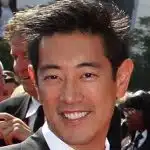
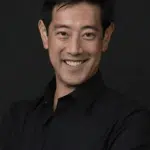

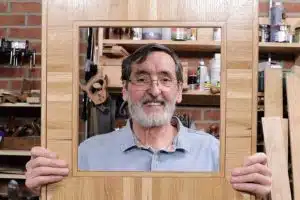
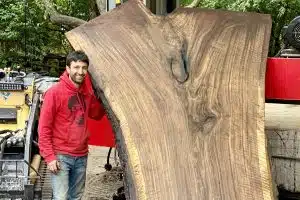
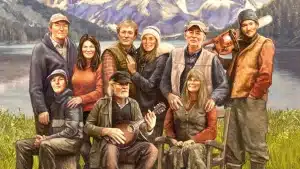
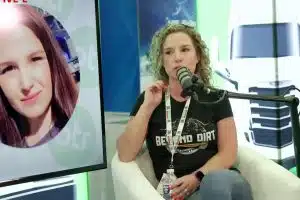

Leave a Comment